Aartech Quick Guide to Thermostats
Friday, December 10, 2021 — 0 Comments
A comfortable home is a happy home, especially as we move further into the colder Winter season. Your home thermostat should provide exactly what you want and need to control your home's heating, whether you're looking for the latest and greatest smart tech, wanting to cut down on energy costs, or just looking for an upgrade for your home.
Here at Aartech, we're dedicated to helping our customers find products that fit their needs. This guide will go over everything you need to pick the best thermostat for your home.

What are thermostats and how do they work?
A thermostat is used to measure and control the temperature of your home - it can detect the temperature of the air and then adjust how warm or cool it is in small amounts to keep an area regulated.
When things are warm, they expand, and as they cool, they contract. This action is called thermal expansion. Older-style mechanical thermostats use this to trigger an electrical circuit and measure it by using either a bimetallic strip or gas bellows to detect. A bimetallic strip is made of two pieces of different metals that are bolted together, that bend with temperature change to control the thermostat.
Newer, more modern work by sending a current through an internal component called a thermistor. A thermistor measures the resistance of the current to calculate the temperature. It then compares the detected temperature to the programmed temperature of the heating system and adjusts as needed.
Baseboard vs Forced Air
There are some key differences between baseboard heating and forced-air systems.
Baseboard thermostats operate at 120V or 240V and use electricity flowing through a heating element to control the room. The flow of electricity is turned off or on by the baseboard thermostat. The thermostat is sometimes part of the baseboard heater but it is more commonly wall mounted with 120V/240V wiring running from the thermostat to the baseboard heater
Forced air systems are typically gas-fired, warmed air that is pumped through the house using a fan or blower and ductwork. These systems work best with a low voltage thermostat that can control the forced air heating system and can also control an air conditioner connected to the same system.
Programmable vs Non-programmable
The choice between programmable vs non-programmable thermostats boils down to what you want from your thermostat. The basic premise is that programmable thermostats automatically set the temperature in your space based on a schedule, while the non-programmable counterpart stays at the same temperature 24 hours a day. So, with a programable one, you don't need to worry about manually adjusting the thermostat before you leave or before bed. Programmable thermostats can offer single day, 5/2 or 7 day schedules for user convenience - some offer complete customization. This is convenient and can save money over time, but it's really up to what you're looking for.
With those explanations out of the way, there are a wide variety of thermostats that all offer different features to make your life easier and more comfortable. This guide goes over the benefits of different types of thermostats that could be the ideal choice for your home heating system.
Low voltage
Low voltage thermostats are the go-to choice for forced air systems and air conditioning systems. They run on either millivolts or 24VAC.
Our low voltage suggestion:
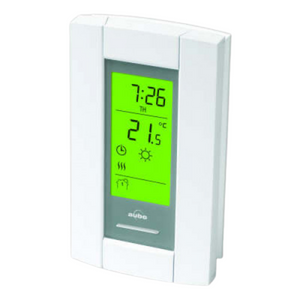
Honeywell Aube 7 Day Programmable Low Voltage Thermostat
120V or 240V Thermostats
120V and 240V thermostats are the most common thermostats and can offer a variety of features such as scheduling, automation and more. 240V thermostats are ideal for larger heating loads. Both types can usually be used with baseboard and convectors, but it's a good idea to double-check before purchasing.
Our 120V choice:
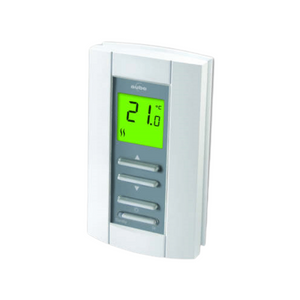
Honeywell Aube Thermostat Non-Programmable 120VAC Single Pole
Our 240V choice:
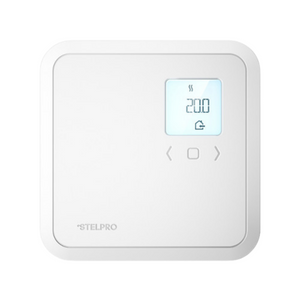
StelPro Programmable Electronic Thermostat 4000W, 240V, White
Wireless Thermostats
Wireless thermostats provide more freedom than their wired counterparts. They offer the same great features but without the need to run new wires. - Some thermostats can even be moved from room to room as needed for convenient control.
Our wireless choice:
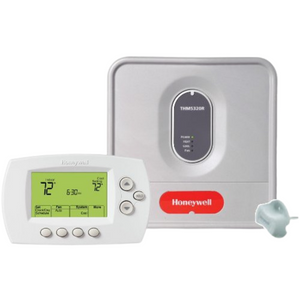
Honeywell Wireless Programmable FocusPRO Kit
WiFi Thermostats
WiFi thermostats are a great choice for upgrading your home heating system with smart features. You can use them in your home and create a schedule or automatic adjustments to save money or use them for your cottage or rental property to manage heating and cooling remotely. They can easily be added to many smart home systems as well.
Our WiFi choice:
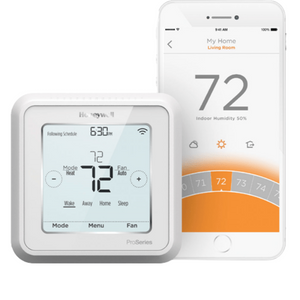
Honeywell Lyric T6 Pro WiFi Thermostat Up to 3 Heat/2 Cool Heat Pump
Smart Thermostats
Like many things these days, thermostats also benefit from modern smart features to enhance home comfort and provide great energy savings. While they may seem pricey initially, they are an excellent investment to cut costs month-to-month with custom heating and cooling control.
Our smart WiFi choice:
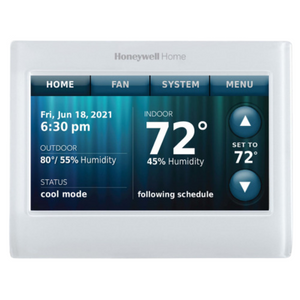
Honeywell Colour Touch Screen WIFI Thermostat
Our smart ZWave Choice:
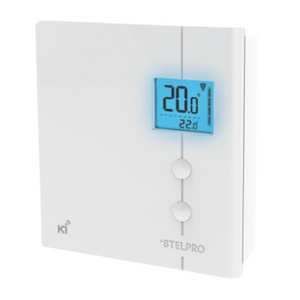
Stelpro Ki STZW402+ Zwave Baseboard Line Voltage Thermostat 120V 240V
Our Zigbee Choice:
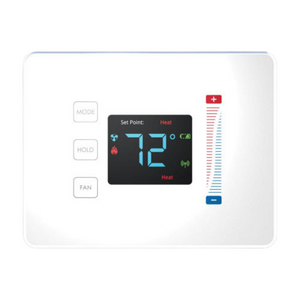
Centralite Zigbee Thermostat, Pearl White
Baseboard Thermostats
As mentioned previously, baseboard thermostats may have slightly different requirements than thermostats for forced air systems. Be sure to double-check the requirements for your system before purchasing.
Our standard baseboard choice:
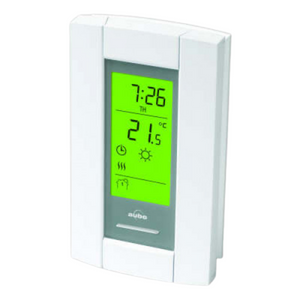
Aube Programmable Thermostat 120V SPST Baseboard Ambient and Floor Remote Input
Wireless baseboard
Baseboard thermostats also have wireless versions that offer great features without extra wires. Gain control of your baseboard heater from a wall-mounted thermostat without running new wires. Just be sure to double-check installation guides before purchasing.
Our wireless baseboard choice:
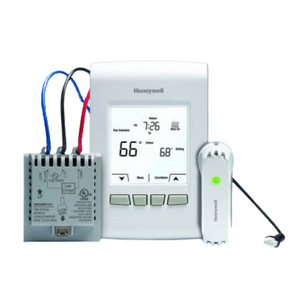
Honeywell Wireless Line Voltage Thermostat Including Redlink Module
Smart baseboard
When the smart home era first began, manufacturers were focused on forced air systems, but today you can get your hands on smart thermostats for your baseboard heating system. Many smart baseboard thermostats can be installed for each baseboard and be controlled using the same app.
Our smart baseboard choice:
StelPro Maestro WiFi Smart Thermostat for 120V / 240V Electric / Baseboard Heat



